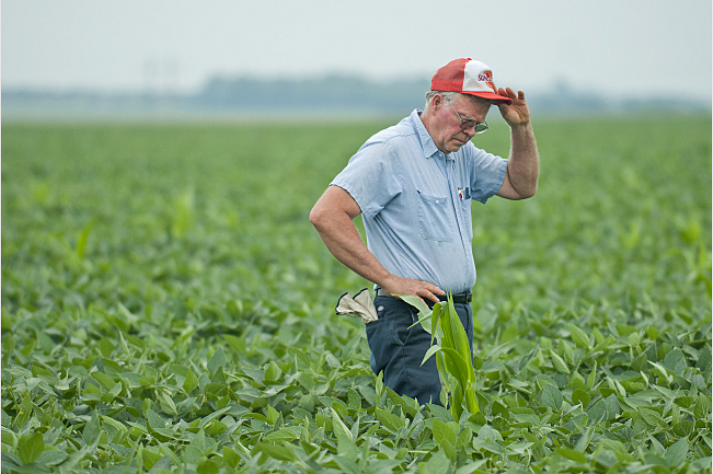I’ve opined in the past that media coverage of agriculture in Minnesota and elsewhere tends to emphasize the bad times that farmers experience.
It’s too soggy in the spring, it’s too dry in the summer, it’s a low-yield crop in the fall — those are the traditional laments that make the news on the rare occasions when the city slickers drop a few paragraphs on the lives of farmers.
It was simple to see the difference between good and bad. Back in the day, this was the definition of “bad.”

This here? This is what bad news looks like for farmers this year:

These days, even good times are tough times. Farmers live in an economic structure that mere mortals can’t hope to comprehend.
The problem this year? The harvest was too bountiful.
Farmers will haul in 4 billion bushels of soybeans and 14.5 billion bushels of corn, according to USDA estimates. The problem? Demand can’t keep up with that monster harvest. Corn and soybean prices have been falling for months. A bushel of corn is now worth under $4 — about half what it was two years ago.
That has farmers like Gene Trausch worried. From the cab of his John Deere combine, Trausch watches the machine churn through a field of soybeans. His irrigated soybean fields are showing big yields. So did the corn he recently picked.
“We out-produced ourselves,” says Trausch, who raises raise corn, soybeans and wheat near Minden in central Nebraska.
When prices started booming around 2007, farmers planted millions more acres of corn and beans — much of it in places where they would normally grow wheat or cotton. Even land set aside for conservation was plowed up to grow corn. Trausch jokes that Mother Nature usually keeps things in check.
“You always hope your neighbor burns up, hails out, whatever, dries up, but you have a good crop,” he says. “You know, that’s just the way it works. But everybody had a good crop this year. “
And there it is: You hope your neighbor suffers one disaster after another so that you can live a better life.
The bountiful harvest? It’s going to be bad news for everybody, our Nebraska farmer friend says.
It’s going to hurt,” Trausch says. “Because the store fronts in town like in Minden, Kearney, Hastings, Grand Island, wherever – they’re going to be hurting. And then also, your implement dealers. They’re just not going to sell nothing.”
He’s not making it up. Good times can be bad times in the agriculture industry.
But it presents a challenge in telling their story: What do you want the rest of us to do about it? How should we react? What should we hope for at the beginning of each season that doesn’t include hoping for the worst for your neighbors?
